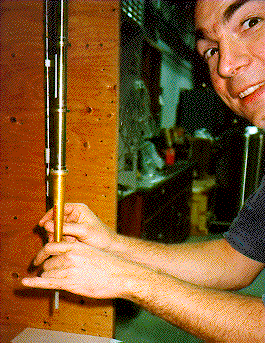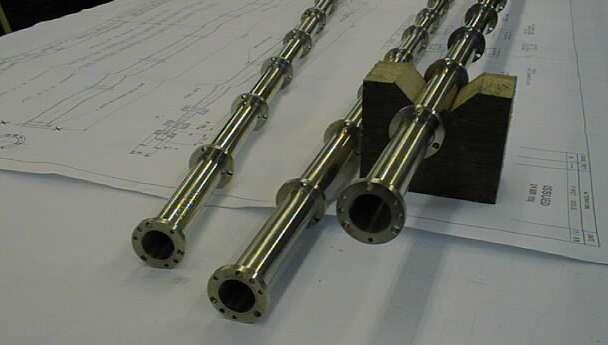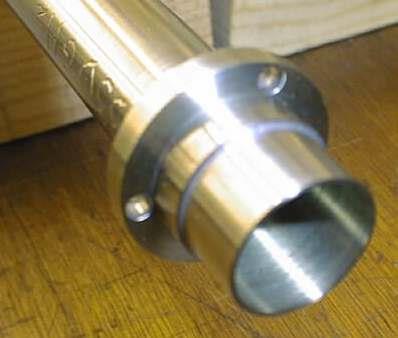Why use Corrugated HE11 guides in ESR systems?


Above 90GHz single-mode waveguide losses increase substantially and start to impact seriously on the total noise figure of the spectrometer. This has led to most high field spectrometers using overmoded guide. In all these systems it is very important to keep mode conversion to a minimum. Higher order modes will not necessarily couple to the mixer and thus appear as resistive losses. Worse still higher order modes can lead to standing waves in the spectrometer and lead to the conversion of FM noise to AM noise. One solution is to use corrugated guide.

Corrugated HE11 guides have been used extensively for many years in plasma diagnostic experiments to transport mm-wave and sub-mm-wave radiation over many metres in confined spaces, with extremely low losses and high mode and polarisation quality. This is a proven technology, which has been successfully adapted for ESR applications at cryogenic temperatures. The guide consists of thin walled (typically 300 micron) corrugated tube made from German slver, which has low thermal conductivity. The corrugations presents a very high wall impedance to the mm-wave radiation, which keep the wall currents very low, which in turn leads to low losses and low mode conversion with tube distortion.

The main advantages and characteristics of HE11 guide include:
- Extremely low loss propagation (~0.01dB/m)
- Very high operational bandwidths
- Very high coupling efficiency to both fundamental Gaussian beams and single mode waveguide systems
- Excellent polarisation characteristics
- Allows both orthogonal polarisation states to be transmitted - permitting polarisation encoding, induction operation and illumination with circularly polarised radiation.
- Low levels of mode coupling and rotation of polarisation with tube distortion
- Cryogenic operation - low heat loss and similar levels of thermal contraction to stainless steel.
This type of guide has been successfully used to couple to induction mode -Fabry-Perot type resonators and non-resonant sample holders as well as "standard" cylindrical single-mode resonator systems via single-mode waveguide.
In contrast, smooth walled circular guide is more sensitive to the effects of tube distortion in terms of extra mode coupling and polarisation rotation.
Smooth guide also does not support the HE11 mode. A Gaussian mode will instead excite primarily the TE11 and TM11 modes, which have different propagation constants. Therefore the modes can arrive out of phase at the resonator which may lead to beam distortion and coupling losses or high cross-polar levels.